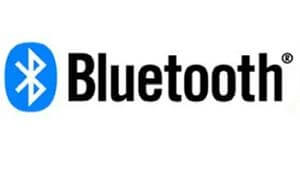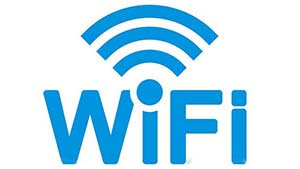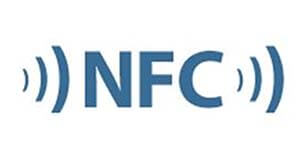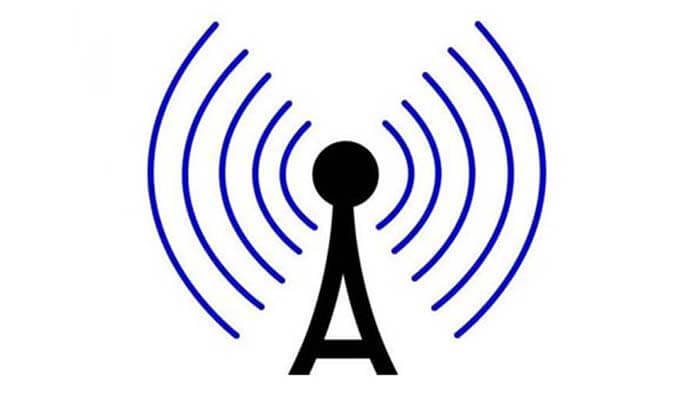This article is about the comparison of 5 kinds of wireless communication technologies, namely Zigbee, Bluetooth, UWB, Wi-Fi, and NFC technology.
ZigBee technology in wireless communication technologies
Bluetooth technology in wireless communication technologies
UWB technology in wireless communication technologies
Wi-Fi technology in wireless communication technologies
NFC technology in wireless communication technologies
The relationship between the 5 wireless communication technologies
With the development of electronic technology and computer technology, wireless communication technologies have flourished in recent years, and various standard wireless data transmission standards have emerged, each of the wireless communication technologies has its own advantages and disadvantages and different applications.
The 5 wireless communication technologies
ZigBee technology in wireless communication technologies

Introduction to ZigBee technology in wireless communication technologies
ZigBee is a low-power personal area network protocol based on the IEEE 802.15.4 standard. The technology specified in this protocol is a short-range, low-power wireless communication technology. Its characteristics are proximity, low complexity, self-organization, low power consumption, low data rate, and low cost. It is mainly suitable for automatic control and remote control fields and can be embedded in various devices.
ZigBee is a highly reliable wireless data transmission network, similar to CDMA and GSM networks. The ZigBee data transmission module is similar to a mobile network base station. The communication distance ranges from the standard 75m to hundreds of meters and kilometers and supports unlimited expansion.
ZigBee is a wireless data transmission network platform composed of up to 65,000 wireless data transmission modules. Each ZigBee network data transmission module can communicate with each other throughout the network range, and the distance between each network node can be infinitely extended from the standard 75m.
Unlike the CDMA network or GSM network of mobile communication, the ZigBee network is mainly established for industrial field automation control data transmission, thus, it must be simple, easy to use, reliable working, and low price.
While the mobile communication network is mainly established for voice communication, the value of each base station is usually more than one million RMB, while each ZigBee base station is less than 1000 RMB.
Each ZigBee network node can not only act as a monitoring object itself, such as its connected sensors for direct data collection and monitoring but also automatically relay the data information transmitted by other network nodes.
In addition, each Zigbee network node (FFD) can also be wirelessly connected to multiple isolated sub-nodes (RFD) that do not undertake the task of relaying network information within the range of their own signal coverage.
ZigBee architecture features
ZigBee protocol layers from bottom to top are the entity layer (PHY), media access layer (MAC), network layer (NWK), application layer (APL), etc. The roles of network devices can be divided into three types, such as ZigBeeCoordinator, ZigBeeRouter, and ZigBeeEndDevice.
ZigBee technology advantages
Low power consumption
In low-power standby mode, two 5 dry batteries can support a node to work for 6 to 24 months, or even longer. This is the outstanding advantage of ZigBee.
In comparison, Bluetooth can work for weeks, WiFi can work for hours. Now, TI and Germany’s Micropelt company jointly launched a new energy ZigBee node. The node uses Micropelt’s thermoelectric generator to provide power to TI’s ZigBee.
Low cost
By significantly simplifying the protocol (less than 1/10 of Bluetooth), it reduces the requirements of the communication controller, as measured by the predictive analysis, with 8051’s 8-bit microcontroller, a fully functional master node requires 32KB of code, with sub-functional nodes as little as 4KB of code, and ZigBee is free of protocol royalties. The price of each chip is about 2 USD.
Low rate
ZigBee works at a lower rate of 20 to 250 kbps, providing raw data throughput rates of 250 kbps (2.4 GHz), 40 kbps (915 MHz), and 20 kbps (868 MHz), respectively, to meet the needs of low-rate data transmission applications.
Proximity
The transmission range is generally between 10 and 100 meters and can be increased to 1 to 3 km after increasing the RF transmit power. This refers to the distance between adjacent nodes. If the relay is by routing and inter-node communication, the transmission distance will be able to go further.
Short-time delay
ZigBee’s response speed is faster, generally from sleep to working state only 15 ms, node connection into the network only 30 ms, further saving power. In comparison, Bluetooth takes 3-10s, and WiFi takes 3s.
High Capacity
ZigBee can adopt star, slice, and mesh network structure, with a master node managing several sub-nodes, and at most one master node can manage 254 sub-nodes; at the same time, the master node can also be managed by the upper layer of the network nodes, which can form a large network of up to 65000 nodes.
High security
ZigBee provides three levels of security modes, including no security settings, the use of access control lists (ACL) to prevent illegal access to data, and symmetric cryptography with advanced encryption standards (AES 128) to flexibly determine its security attributes.
License-free frequency band
Uses direct sequence spread spectrum in the Industrial Scientific Medical (ISM) band, 2.4 GHz (worldwide), 915 MHz (US), and 868 MHz (Europe).
ZigBee technology performance analysis in wireless communication technologies
The data rate is relatively low, only 250Kb/S in the 2.4GHz band, and this is only the rate on the link, in addition to the consumption of the channel competition to answer and retransmission, etc., the real rate can be used by the application may be less than 100Kb / S, and the remaining rate may be adjacent to multiple nodes and multiple applications of the same node to divide, so it is not suitable for things like video.
In terms of reliability, ZigBee has many aspects to ensure. The physical layer uses spread spectrum technology, which can resist interference to some extent, and the MAC application layer (the APS part) has an answer retransmission function.
The CSMA mechanism in the MAC layer enables nodes to listen to the channel before sending, which can play a role in avoiding interference. When the ZigBee network is interfered with by the outside world and cannot work properly, the whole network can dynamically switch to another working channel.
Time delay because ZigBee uses random access MAC layer, and does not support time division multiplexing channel access, so it cannot well support some real-time services.
Energy consumption characteristics are a technical advantage of ZigBee. Usually, the application data rate carried by ZigBee nodes is relatively low.
When communication is not required, the node can enter a very low-power hibernation state, when energy consumption may be only one thousandth of the normal working state.
In general, the hibernation time accounts for most of the total operating time, sometimes less than one percent of the normal working time, thus achieving a very high energy-saving effect.
Networking and rout ability, network layer characteristics.
ZigBee large-scale networking capabilities: 65000 nodes per network Bluetooth, 8 nodes per network.
Because ZigBee uses direct expansion technology, if the non-beacon mode, the network can be expanded greatly, because it does not need to synchronize and the process of nodes joining and rejoining the network is very fast, usually within 1 second, or even faster. Bluetooth usually takes 3 seconds.
In terms of routing, ZigBee supports highly reliable mesh network routing, so a wide range of networks can be arranged and supports multicast and broadcast features, which can bring powerful support to rich applications.
ZigBee technology in wireless communication technologies Prospect
ZigBee is not intended to compete with Bluetooth or other existing standards, it is targeted at specific markets where existing systems do not yet meet their needs, and it has a broad application outlook.
The ZigBee Alliance predicts that in the next four to five years, there will be 50 ZigBee devices per household, and eventually 150 per household.
Its application areas mainly include the below:
Home and building networks: temperature control of air conditioning systems, automatic control of lighting, automatic control of curtains, gas metering control, remote control of household appliances, etc.
Industrial control: automatic control of various monitors and sensors
Commercial: smart tags, etc.
Public places: smoke detectors, etc.
Agricultural control: Collection of various soil information and climate information
Medical: Emergency pagers and medical sensors for the elderly and people with limited mobility, etc.
Bluetooth technology in wireless communication technologies

Introduction of Bluetooth technology in wireless communication technologies
Bluetooth is a radio technology that supports short-range communication (generally within 10m) of devices. It can exchange information wirelessly between many devices including cell phones, PDAs, wireless headsets, laptops, and related peripherals.
Using Bluetooth technology, can effectively simplify the communication between mobile communication terminal devices and also successfully simplify the communication between devices and the Internet, thus data transmission becomes more rapid and efficient and widens the path for wireless communication.
Bluetooth uses a decentralized network structure and fast frequency hopping and short packet technology to support point-to-point and point-to-multipoint communication and works in the 2.4GHz ISM (Industrial, Scientific, Medical) band, which is commonly used worldwide. Its data rate is 1Mbps, and it uses a time-division duplex transmission scheme to achieve full-duplex transmission.
Bluetooth technology is an open global specification for wireless data and voice communications, based on a low-cost, close-range wireless connection to create a special connection for fixed and mobile device communication environments. Its program is written on a 9 x 9 mm microchip. Bluetooth operates in the global 2.4 GHz ISM (i.e. Industrial, Scientific, Medical) frequency band. The data rate of Bluetooth is 1Mb/s. The time division duplex transmission scheme is used to achieve full-duplex transmission. IEEE802.15 protocol is used.
The ISM band is a band open to all radio systems, so any use of one of these bands will encounter unpredictable sources of interference. For example, certain appliances, cordless phones, car door openers, microwave ovens, etc., can be sources of interference. For this reason, Bluetooth is specially designed with a fast confirmation and frequency hopping scheme to ensure link stability.
Frequency hopping technology is divided into a number of frequency hopping channels (hop channel), in a connection, the radio transceiver according to a certain code sequence (that is, a certain law, technically called pseudo-random code, is a false random code) constantly jump from one channel to another channel, only the transmitter and receiver are communicating according to this law, and other interference is not possible according to the same law interference;
The instantaneous bandwidth of frequency hopping is very narrow, but this narrow bandwidth is expanded into wideband hundreds of times through extended-spectrum technology so that the possible effects of interference become very small.
The use of FEC (Forward Error Correction) suppresses random noise over long-distance links. Frequency hopping transceivers with binary frequency modulation (FM) technology are used to suppress interference and prevent fading.
The Bluetooth baseband protocol is a combination of circuit switching and packet switching. Synchronized packets can be transmitted in a reserved time slot, each packet is sent at a different frequency.
A packet nominally occupies a one-time slot, but can actually be extended to occupy up to five-time slots. Bluetooth can support asynchronous data channels, up to three simultaneous synchronous voice channels, and one channel for both asynchronous data and synchronous voice.
Each voice channel supports a 64kb/s synchronous voice link. The asynchronous channel can support a maximum rate of 721kb/s at one end and 57.6kb/s at the other end for asymmetric connections, or 433.9kb/s for symmetric connections.
Advantages of Bluetooth technology in wireless communication technologies
Globally available
The Bluetooth wireless technology specification is available free of charge to our member companies worldwide. Manufacturers in many industries are actively implementing this technology in their products to reduce the use of patchy wires, enable seamless connectivity, stream stereo sound, transmit data, or communicate by voice.
Bluetooth technology operates in the 2.4 GHz band, an industrial, scientific, and medical (ISM) radio band that does not require a license. Because of this, there are no fees to use Bluetooth technology. However, you must register with your cellular provider to use GSM or CDMA, and you do not need to pay anything for using Bluetooth technology other than the cost of the equipment.
Range of devices
Bluetooth technology is being used more than ever, with products integrating the technology ranging from cell phones and cars to medical devices, and by users ranging from consumers to industrial markets to enterprises.
Low power, small size, and low-cost silicon solutions allow Bluetooth technology to be used in even the smallest of devices. See the full range of products offered by our members in the Bluetooth product catalog and component product list.
Ease of use
Bluetooth technology is an instant technology that requires no fixed infrastructure and is easy to install and set up. You don’t need cables to connect.
It’s also effortless for new users; you just need to have a Bluetooth-branded product, check the available profiles, and connect it to another Bluetooth device using the same profile.
The subsequent PIN process is as easy as if you were at an ATM machine. You can take your personal local area network (PAN) with you when you go out and even connect to other networks.
Worldwide specifications
Bluetooth wireless technology is the most widely supported, feature-rich, and secure wireless standard on the market today. A worldwide qualification process tests members’ products for compliance with the standard.
In total, more than 4,000 companies have become members of the Bluetooth Special Interest Group (SIG) since the Bluetooth specification was released in 1999. At the same time, the number of Bluetooth products on the market has grown exponentially and rapidly.
Applications of Bluetooth in wireless communication technologies
Home
The modern home is different from the old one in many ways. With the help of modern technology, more and more people are working from home, and their lives are more casual and efficient.
Bluetooth devices not only make working from home easier but also make home entertainment more convenient: users can wirelessly control audio files stored on a PC or Apple iPod from up to 30 feet away.
Bluetooth technology can also be used in adapters that allow people to send photos from their cameras, phones, and laptops to TVs to share with friends.
Work
The use of Bluetooth technology can solve the clutter of an office environment. Bluetooth-enabled devices can create their own instant networks, allowing users to share presentations or other files without compatibility or email access limitations.
Bluetooth devices make it easy to hold group meetings, talk to other offices over a wireless network, and transfer ideas from a dry-erase whiteboard to a computer.
En route
People often travel between workplaces, homes, and other destinations, and Bluetooth technology provides the ability to access important information or communications on the go with personal connectivity.
Bluetooth-enabled cell phones, PDAs, laptops, headsets, and cars enable hands-free communication on the go, allowing users to stay connected to the Internet while out of range of a hotspot or wired broadband connection, and to synchronize contacts and calendar entries between PCs and mobile devices to access important information.
Bluetooth in-car multimedia system use
Many cars now have in-car multimedia information systems that support Bluetooth access and can support up to 10 groups of Bluetooth pairing, including smartphones, tablets, and multimedia players.
Entertainment
Bluetooth wireless technology is the only technology that can truly enable wireless entertainment. It will soon be possible to use wireless headphones to conveniently enjoy music from an MP3 player, drive a car, or play in a park with wires. Sending photos to a printer or a friend’s phone is also very simple.
UWB technology in wireless communication technologies

Introduction of UWB technology in wireless communication technologies
UWB (Ultra Wideband) is a carrier-less communication technology that uses nanoseconds to microsecond non-sine wave narrow pulses to transmit data. Some people call it a revolutionary advance in the field of radio and believe that it will become the mainstream technology for future short-range wireless communications.
UWB (Ultra-Wideband) ultra-wideband, in the beginning, is the use of pulse radio technology. UWB modulation using pulse width in the ns level of fast-rising and falling pulses, pulse coverage of the spectrum from dc to GHz, without the RF frequency conversion required for conventional narrowband modulation, pulse shaping can be sent directly to the antenna to transmit.
The pulse peak-to-peak time interval is in the order of 10 – 100 ps. The UWB signal is sparsely distributed in the time axis and its power spectral density is quite low, and the RF can transmit multiple UWB signals simultaneously. Unlike conventional wireless systems that convert baseband signals to radiofrequency (RF), UWB can be considered a baseband propagation scheme over RF and can achieve data rates of 100 Mb/s at very low spectral densities in buildings.
To further increase data rates, UWB applies ultra-short baseband-rich GHz-level spectrum using a secure signaling method (Intriguing Signaling Method). Based on the broad spectrum of UWB, the FCC announced in 2002 that UWB could be used for precision ranging, metal detection, next-generation WLAN, and wireless communications. To protect the GPS, navigation, and military communication bands, UWB is limited to 3.1 – 10.6 GHz and below 41 dB transmit power.
Technology Principles of UWB in wireless communication technologies
The most basic working principle of UWB technology is to transmit and receive Gaussian single-period ultra-short-time pulses with strictly controlled pulse intervals. The ultra-short-time single-period pulses determine a wide bandwidth of the signal, and the receiver directly converts the pulse sequence into a baseband signal using a one-stage front-end cross-correlator, eliminating the need for an IF stage in traditional communication equipment and greatly reducing equipment complexity.
UWB technology uses pulse-position modulated PPM single-cycle pulses to carry information and channel coding, generally operating at pulse widths of 0.1-1.5 ns (1 nanosecond = 100 millionths of a second) and repetition periods of 25-1000 ns.
Strong energy spikes appear in the spectrum due to the dispersion of the spectrum caused by the periodic nature of the signal repetition in the time domain. These spikes will interfere with conventional radio equipment and signals, and this very regular pulse sequence carries little useful information. Changing the periodicity of the time domain can reduce such spikes, i.e., by using pulse position modulation PPM.
Characteristics of UWB technology in wireless communication technologies
Unlike conventional wireless systems with relatively narrow bandwidths such as Bluetooth and WLAN, UWB can send a series of very narrow low-power pulses over a wide frequency. The wider spectrum, lower power, and pulsed data mean that UWB causes less interference than traditional narrowband wireless solutions and can provide performance comparable to wired in indoor wireless environments.
UWB has the following characteristics.
High interference immunity
UWB uses a time-hopping spread spectrum signal, and the system has a large processing gain, dispersing the weak radio pulse signal over a wide frequency band at transmitting, with an output power even lower than the noise generated by ordinary equipment. When receiving, the signal energy is restored and the spreading gain is generated in the process of despreading.
Therefore, compared with IEEE802.11a, IEEE802.11b, and Bluetooth, UWB has stronger anti-interference performance under the same code speed condition. The transmission rate is high, and the data rate of UWB can reach tens of Mbit/s to hundreds of Mbit/s, which is expected to be 100 times higher than Bluetooth, and also higher than IEEE802.11a and IEEE802.11b.
Extremely wide bandwidth
UWB uses a bandwidth of more than 1 GHz, up to several GHz. ultra-wideband system capacity, and can work simultaneously with the current narrowband communication system without interfering with each other. This has opened up a new time-domain radio resource in today’s increasingly tight frequency resources.
Small power consumption
Usually, wireless communication systems need to continuously transmit carrier waves when communicating and therefore consume a certain amount of power. UWB does not use carrier waves but only sends out instantaneous pulse waves, that is, directly sent out by 0 and 1, and only when needed to send pulse waves, so the consumption of electricity is small.
Good confidentiality
UWB confidentiality is manifested in two aspects. On the one hand, with the use of a time-hopping spread spectrum, the receiver can only be known when the transmitter spread spectrum code to solve the transmit data; on the other hand, the system’s transmit power spectral density is very low, with conventional receivers cannot receive.
The transmit power is very small
UWB system transmit power is very small, communication equipment can be used less than 1mW of transmit power to achieve communication. Low transmit power greatly extends the system power operating time. Moreover, the transmit power is small, and its electromagnetic wave radiation will have little effect on the human body, so the application is wide.
Development prospects of UWB technology in wireless communication technologies
UWB system has been proven to be able to provide reliable data transmission of more than 480Mbps in households with very low power spectrum density.
UWB technology has attracted the attention of the global industry for its innovation and interest in wireless communication.
Compared with Bluetooth, 802.11b, 802.15, and other wireless communications, UWB can provide faster, farther, and wider transmission rates. More and more researchers are devoting themselves to the field of UWB, some simply developing UWB technology, some developing UWB should, and some both.
It is believed that UWB technology, not only for low-end users, and in some high-end technology areas, driven by military needs and the commercial market, UWB technology will further develop and mature up.
Wi-Fi technology in wireless communication technologies

Introduction of Wi-Fi technology in wireless communication technologies
Wi-Fi is a technology that enables terminals such as personal computers and handheld devices (e.g., PDAs, cell phones) to connect to each other in a wireless manner.
Wi-Fi is a brand of wireless network communication technology, held by the Wi-Fi Alliance (Wi-Fi Alliance). The goal is to improve interoperability between wireless network products based on the IEEE 802.11 standard. A local area network using the IEEE 802.11 family of protocols is known as Wi-Fi.
Wi-Fi was originally an abbreviation for wireless fidelity, and Wi-Fi full name is wireless fidelity, in the wireless LAN category refers to wireless compatibility certification, essentially a commercial certification, but also a wireless networking technology, previously connected to the computer through a network cable, but now is connected to the network through radio waves;
Commonly a wireless router, in the effective range covered by the radio waves of this wireless router can be used to connect to the Internet by Wi-Fi connection, if the wireless router is connected to an ADSL line or another Internet line, it is also known as a hotspot.
Features of Wi-Fi technology in wireless communication technologies
Wider bandwidth
Currently, all 11n wireless transceiver devices support two spatial data streams, sending and receiving data can use two or three antenna combinations, and soon there will be chips that support three or four data streams, and data rates can reach 450Mbps and 600Mbps respectively. 802.11s standard can be used to connect these high-end nodes to form an Internet-like Wi-Fi network with redundancy capability.
Stronger RF signal
11n in more optional performance features will appear in the wireless chip, wireless clients and wireless access points using these chips can make the radio frequency (RF) signal more resilient, stable, and reliable, in other words, more like a wire.
These performance features include low-density parity-check code to improve error correction capabilities; transmit beamforming, which uses feedback from the Wi-Fi client, allowing an access point to focus on the client’s RF signal; space-time packet coding (STBC), which uses multiple antennas to improve signal reliability.
Wi-Fi consumes less power
802.11n provides significant innovations in power consumption and management that not only extend the battery life of Wi-Fi smartphones, but can also be embedded into other devices such as medical monitoring devices, building control systems, real-time location tracking tags, and consumer electronics. Data can be constantly monitored and collected and can be personalized based on the user’s identity and location.
Improved security
Wi-Fi will use identity-based security in Wi-Fi networks where security policies are associated with users rather than with ports, which has the advantage that users can move around their homes, offices, hotels, branches, and public places without security being compromised.
Improved Mobility
The lack of RF management in the previous standard, because access points and clients with adjacent wireless devices usually do not know each other, they only know their own radio wave frequency, this limitation makes it difficult to manage RF.
Wi-Fi personal area
The current Wi-Fi is an end-to-end connection, the future of Wi-Fi networks, your device can be directly connected to other client devices no matter where you are.
At the same time, Wi-Fi access points through the 802.11z standard can also be turned into point-to-point connection engines, which will provide an extension for direct connection configurations, where client devices request permission from an access point to connect directly to another nearby client device, but the data does not pass through the access point, and the client remains connected to the access point, which provides a full set of security and management services.
Development of Wi-Fi technology in wireless communication technologies
Network technologies that cover a larger area, from hotspots to hot zones to entire cities.
Wi-Fi handheld terminals and VoWLAN services are bound to become potential application models.
IP-based Wi-Fi/WiMAX switching technology and an open service platform will make the WLAN network smarter and easier to manage.
Multi-level security policies (WEP, WPA, WPA2, AES, VPN, etc.) based on different levels of security solutions will enable enterprises and individual users to choose the security policy that meets their needs based on different cost performance.
NFC technology in wireless communication technologies

Introduction of NFC technology in wireless communication technologies
Near Field Communication (NFC) is a short-range, high-frequency wireless communication technology that allows contactless point-to-point data transmission (within ten centimeters) between electronic devices to exchange data.
This technology evolved from contact-free radio frequency identification (RFID) and is backward compatible with RFID. It was first developed successfully by Sony and Philips and is mainly used in handheld devices such as cell phones to provide M2M (Machine to Machine) communication.
Because of the natural security of near-field communication, NFC technology is considered to have great application prospects in areas such as cell phone payments.
NFC chips have mutual communication functions and computing capabilities and contain cryptographic logic circuits in the Felica standard, and the late MIFARE standard also adds encryption/decryption modules (SAM).
The features of NFC technology in wireless communication technologies
Like RFID, NFC information is transmitted by electromagnetic induction coupling in the radio frequency portion of the spectrum, but there are still significant differences between the two.
First, NFC is a wireless connection technology that provides easy, secure, and rapid communication, and its transmission range is smaller than that of RFID, which can reach several meters or even tens of meters, but because NFC takes a unique signal attenuation technology, NFC has the characteristics of the close distance, high bandwidth, and low energy consumption compared to RFID.
Secondly, NFC is compatible with existing contactless smart card technology and has become an official standard supported by more and more major manufacturers.
Again, NFC is also a proximity connectivity protocol that provides easy, secure, fast, and automatic communication between various devices. Compared to other connectivity methods in the wireless world, NFC is a private communication method in close proximity.
Finally, RFID is more often used in production, logistics, tracking, and asset management, while NFC plays a huge role in the fields of access control, public transportation, and cell phone payment.
NFC, infrared, and Bluetooth are the same contactless transmission methods, they have their own different technical characteristics and can be used for a variety of different purposes, and there is no difference between the advantages and disadvantages of the technology itself.
NFC cell phones with built-in NFC chips, original use only as a tag RFID increased data bi-directional transmission function, this progress makes it more suitable for electronic money payment.
In particular, what RFID cannot achieve, mutual authentication and dynamic encryption and one-time key (OTP) can be achieved on NFC.
NFC technology supports a variety of applications, including mobile payments and transactions, peer-to-peer communications, and on-the-go information access.
With NFC-enabled cell phones, people can connect to the entertainment services and transactions they want, anywhere, at any time, from any device, to complete payments, access poster information, and more.
NFC devices can be used as contactless smart cards, smart card reader terminals, and device-to-device data transmission links, and their applications can be divided into the following four basic types: for payment and ticketing, for electronic tickets, for smart media, and for exchanging and transmitting data.
Development prospects of NFC technology in wireless communication technologies
NFC has low cost, ease of use, and more intuitive features, which make it appear more potential in some areas.
NFC enables various devices to communicate within a few centimeters through a combination of a chip, an antenna, and some software.
NFC, as an emerging technology, roughly sums up the drawbacks of Bluetooth technology’s poor ability to work together. However, its goal is not to completely replace other wireless technologies such as Bluetooth and Wi-Fi but to play a complementary role to each other in different situations and areas.
Because the data transmission rate of NFC is low, only 212Kbps, it is not suitable for applications such as audio and video streaming, which require higher bandwidth.
These 5 wireless communication technologies are maturing, but each has its own advantages. The 5 wireless communication technologies are inherently complementary, although they may be competing at the edges.
The wireless communication technologies future trends
Today, the global wireless communication technologies industry is characterized by two outstanding features:
First, public mobile communications maintain growth, strong growth in some countries and regions, but there is uneven development;
Second, broadband wireless communication technologies hotspots continue to be very active in research and application.
The information shows that in the global telecommunications market generally low profile background, mobile communications still maintained a good growth trend.
Although the global mobile market is growing, this growth also shows a great unevenness. In terms of subscriber numbers, in developed countries and regions such as North America and Europe, the number of new subscribers is decreasing as mobile subscriber penetration is already high.
While in Asia, Africa, and other regions, especially in developing countries like China, the number of mobile subscribers is growing rapidly. In terms of value created by subscribers, the ARPU of developed countries in Europe and the US far exceeds that of emerging developing countries.
In terms of the growth of the new data service market, South Korea and Japan are showing an explosion and have become the new hot spot for global mobile development.
Because of the different applicability of technologies, resources are unevenly distributed across the country and the world, resulting in the uneven development of wireless communications and uneven coverage.
In the long run, the advantages and disadvantages of each technology are complementary, the standard of each region is unified, the construction is unified, and the development of wireless communication technology suitable for the region is inevitable according to the characteristics of each region.
The future development trend of wireless communication technologies is as follows.
Various wireless communication technologies complement each other, and each of the wireless communication technologies has its own strengths, and the wireless communication technologies suitable for the region are developed in different areas, and the broadband wireless network with diversified access, integrated network, and integrated application is developed, and the organic integration with a broadband fixed network is realized gradually.
Besides the Comparison of 5 Wireless Communication Technologies article, you may also be interested in the below articles.
Internal Antenna VS. External Antenna
LTE Vs. 5G: Is 5G Better Than LTE?




